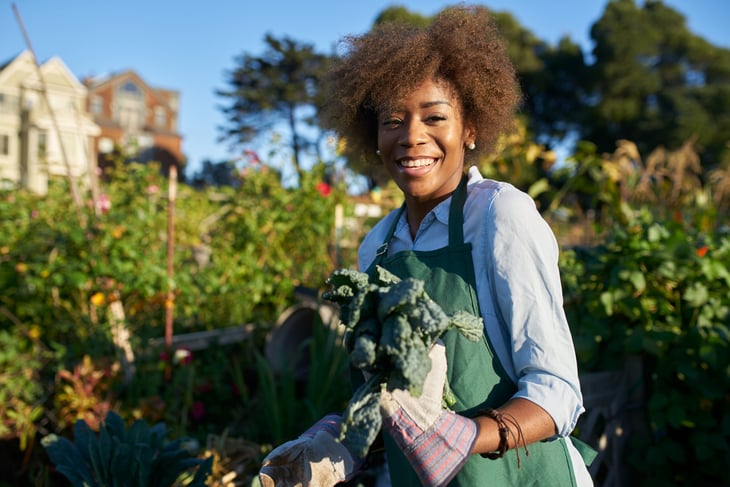
Home gardening exploded during the pandemic. The seed company Burpee, one of the biggest suppliers in the U.S., sold more seed in March 2020 than at any time in its 144-year history. Demand-driven shortages of canning supplies were common, too.
Maybe this was due to the fear of food shortages, or the fear of shopping during a pandemic. Perhaps it was because so many people were laid off that they needed something to do. Whatever the reason, the allure of home vegetable gardening remains strong today, especially amid continued high inflation.
But how to plan your planting? Put in more than one or two zucchini, and by midsummer you’ll be begging people to take the stuff off your hands. But it’s easy to underestimate how much you need of other vegetables.
For example, you might think you’ve planted enough peas but discover that your kids are eating them off the vine. That’s a healthy snack for them, but what about your plans to freeze some?
When it comes to household favorites, consider planting a few more than you think you need.
“Too many tomatoes is a better problem to have than, say, too many okra,” says Linsey Knerl, a longtime gardener and mom of six.
Based on years of experience, the Nebraska-based writer created a free printable garden plant “calculator” chart. It’s designed to help home gardeners eat fresh produce during the summer and still have some left over to can or freeze.
Keep reading for more tips and tricks from Knerl and other expert gardeners.
Be realistic
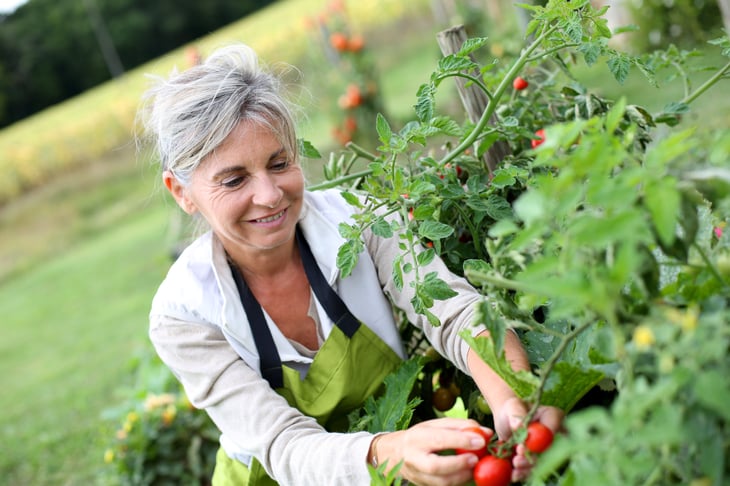
Maybe in your ideal world, your family would want okra every single day. But if you or your family are more interested in BLTs and fresh melons, run with it.
There’s a reason that Knerl’s chart specifies two to three tomato plants per person, but only one zucchini plant.
Oregon-based garden writer Linda Ly has been known to snack on veggies in the field before bringing them in. Maybe that’s why she suggests up to four tomato plants per person. After years of tracking what her household consumes, Ly has come up with a Grow Enough Food Chart.
Such guidelines are merely a starting point, Ly notes:
“Factors like the size of your garden, your growing conditions and even the appetites of your family members all influence how many plants are considered ‘enough.'”
Consider your climate
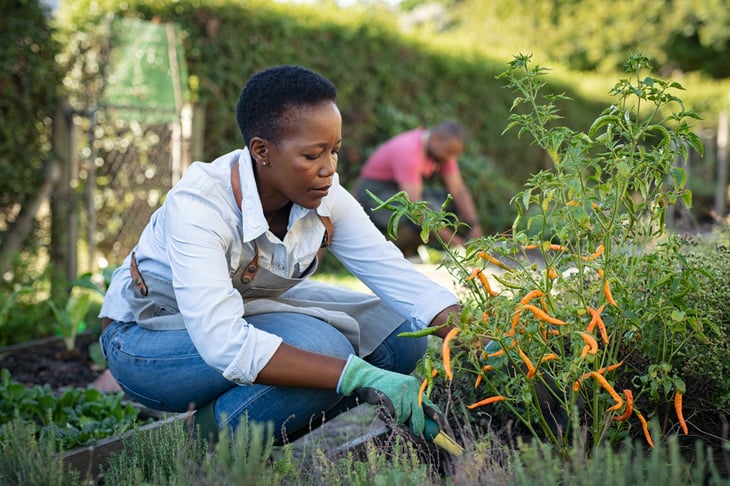
If sweet corn or watermelons won’t reliably grow in your particular climate, why set yourself up for failure right out of the gate? Instead, choose a couple of family favorites — after you’ve researched whether they’ll thrive in your region.
Two great resources are your state’s Cooperative Extension Service and the Master Gardeners program, both of which offer free gardening advice based on where you live.
Once you’ve decided what and how much to plant, you have another decision to make.
Seeds or starts?
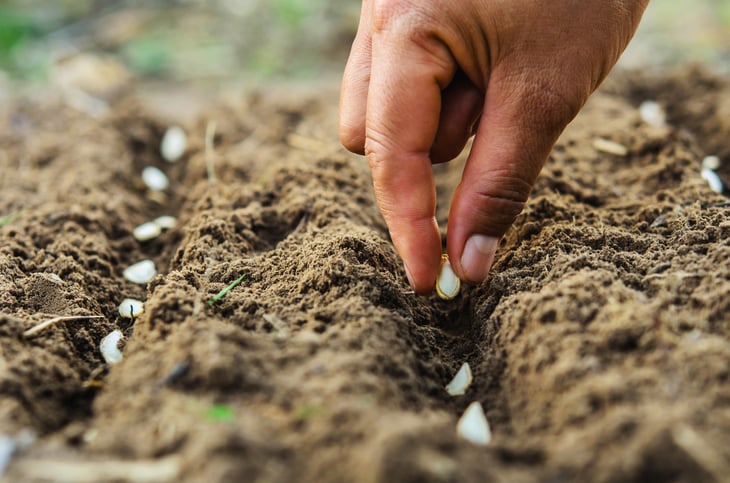
Whether to buy starter plants or seeds is a question of time and patience: It’s less work and more fun to plop some young greenhouse-nurtured plants, or “starts,” into the ground than it is to sow seeds and hope they all sprout.
But it’s also a budget question: Do you want to pay extra for someone else to do the initial growing? Vegetable seedlings can cost as much as a few bucks apiece; mature plants can go for a lot more. By contrast, a package of seeds generally costs no more than a few bucks.
You could try a hybrid approach: Buy a few starts and grow the rest of your garden from seeds. Tomato seedlings will take a couple of months to produce fruit, but some radish and spinach seeds can turn into ready-to-harvest veggies in as little as four to five weeks.
Also consider doing what’s known as “succession planting,” so your crops aren’t all ready to be harvested at once.
For example, you could plant a row of spinach, kale or salad greens every week for a few weeks, and then start another series of plantings in late summer or early fall, ensuring you have a continual supply of greens for months. These cool-weather plants may continue to produce until a frost kills them, and kale and some other crops can survive light frosts.
How much room do you need?
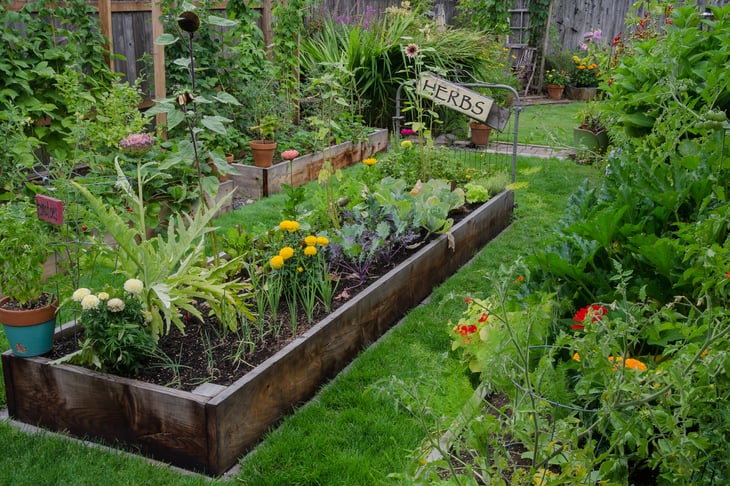
According to the Old Farmer’s Almanac, “It’s better to be proud of a small garden than frustrated by a big one.”
Here are the publication’s suggested parameters for first-timers:
- In-ground planting: 10 by 10 feet (100 square feet) is “a manageable size,” and 12 by 24 feet is likely as large as a novice gardener should attempt. Be sure to leave room to walk among the rows.
- Raised-bed planting: A 4-by-4-foot or 4-by-8-foot bed is “a good beginner size.”
What if you don’t have a yard?
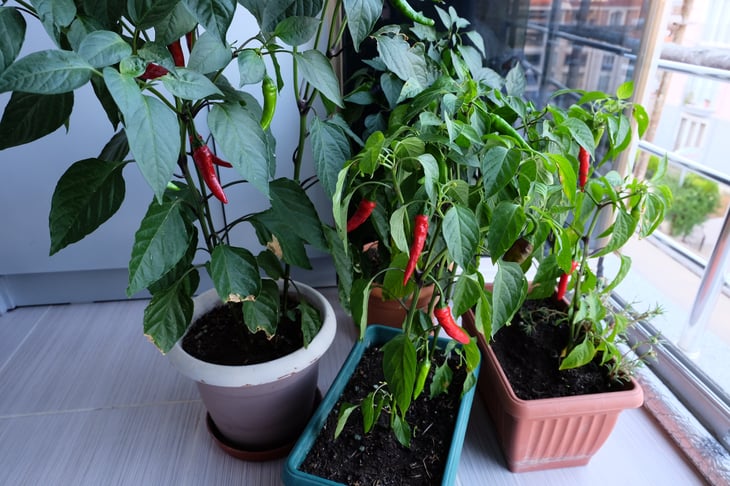
Townhome, condo and apartment dwellers can grow in containers. Seed companies offer loads of plants bred specifically for this. They include:
Note: Containerized plants need a bit more attention. Because there’s much less soil, the plants can dry out quickly. Beginners might want to buy a moisture gauge to help them avoid under-watering (or over-watering).
“If you’re not good about checking in with your garden, getting a phone alert that your garden needs water can be a huge help,” Knerl says.
Preserving the harvest
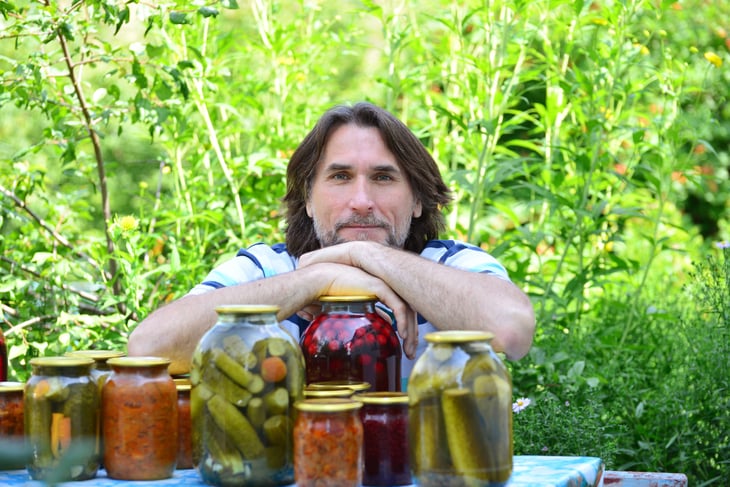
Do gardening right, and you’ll eat delicious food from your own land in the off-season. But do food preservation wrong, and you risk foodborne illness, or worse.
Sounds dire, but the rules for food preservation are fairly straightforward. Learn more about canning, freezing, fermenting, pickling and more from the National Center for Home Food Preservation at the University of Georgia.
If that sounds intimidating, start small, with dehydrating.
Drying food is one of the world’s oldest methods of food preservation. You can do this with solar racks, a home dehydrator or an oven. The University of Georgia Cooperative Extension Service has a free PDF called “Drying Fruits and Vegetables.”
Knerl suggests doing small-batch preservation. It’s unlikely your entire crop will suddenly be ripe all at once, after all.
The bottom line
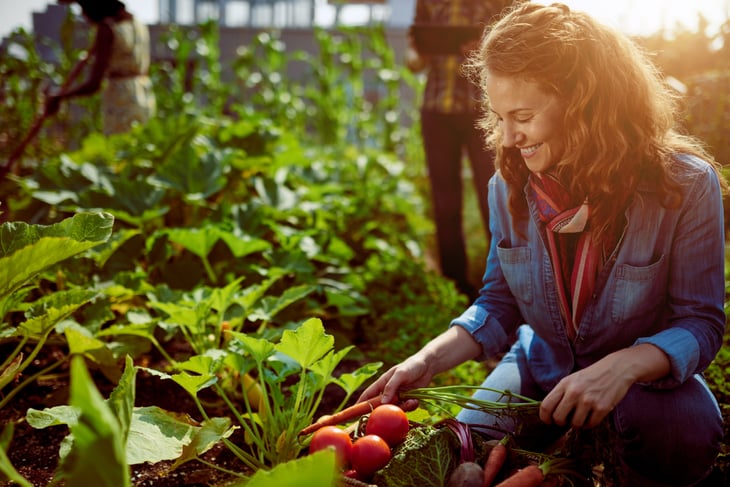
Think you don’t like vegetables? That might be because you’ve never eaten the freshest ones available — like the ones you pick 30 seconds before eating them.
“You haven’t lived until you’ve had fresh tomatoes on a BLT sandwich,” Knerl says.
Think of it as a hobby you can eat. Start small, with a few plants so you don’t get discouraged. Learn all you can from the Master Gardeners program, or from fellow gardeners. Eat it all fresh, or save some for later. But go easy on the zucchini.





Add a Comment
Our Policy: We welcome relevant and respectful comments in order to foster healthy and informative discussions. All other comments may be removed. Comments with links are automatically held for moderation.